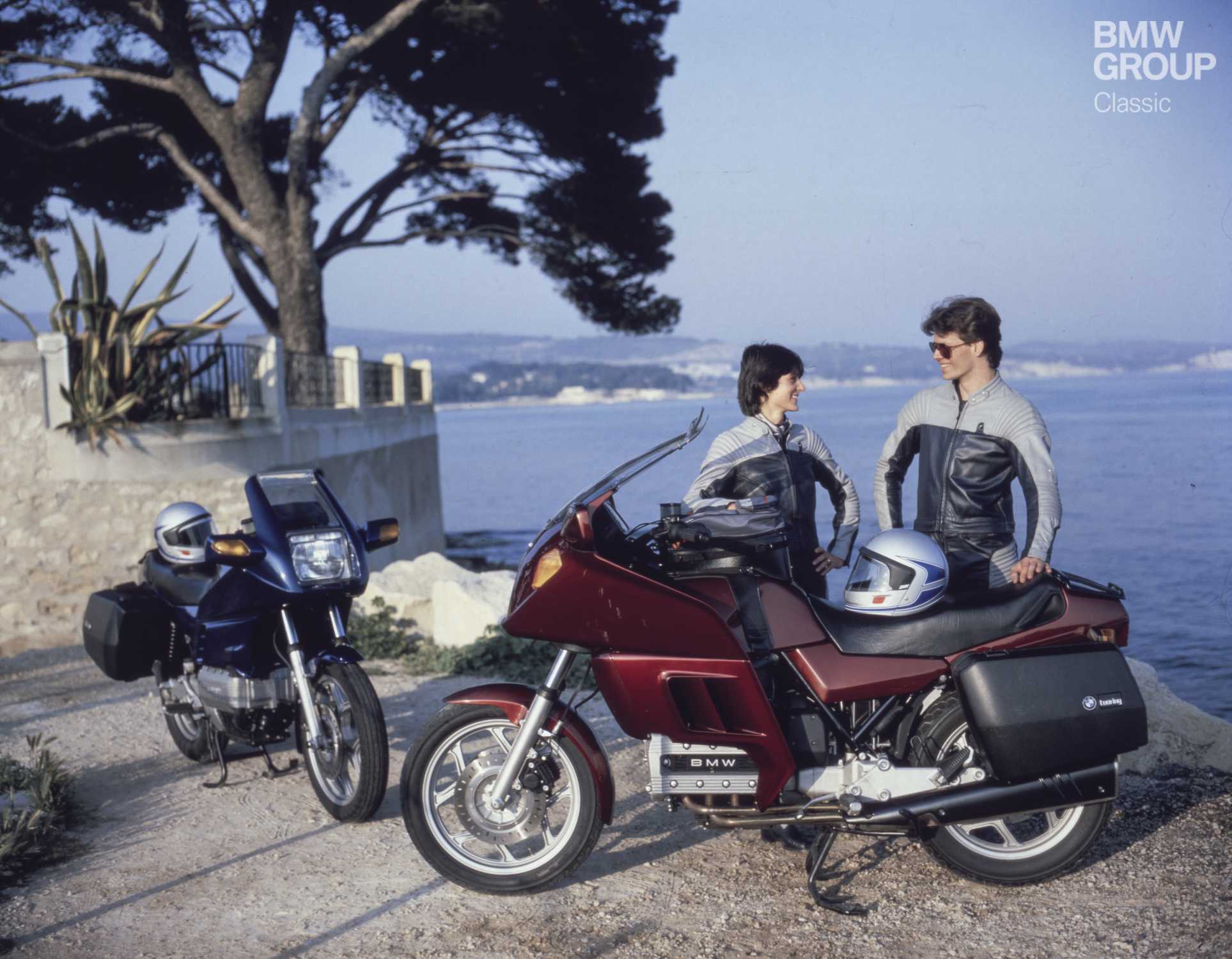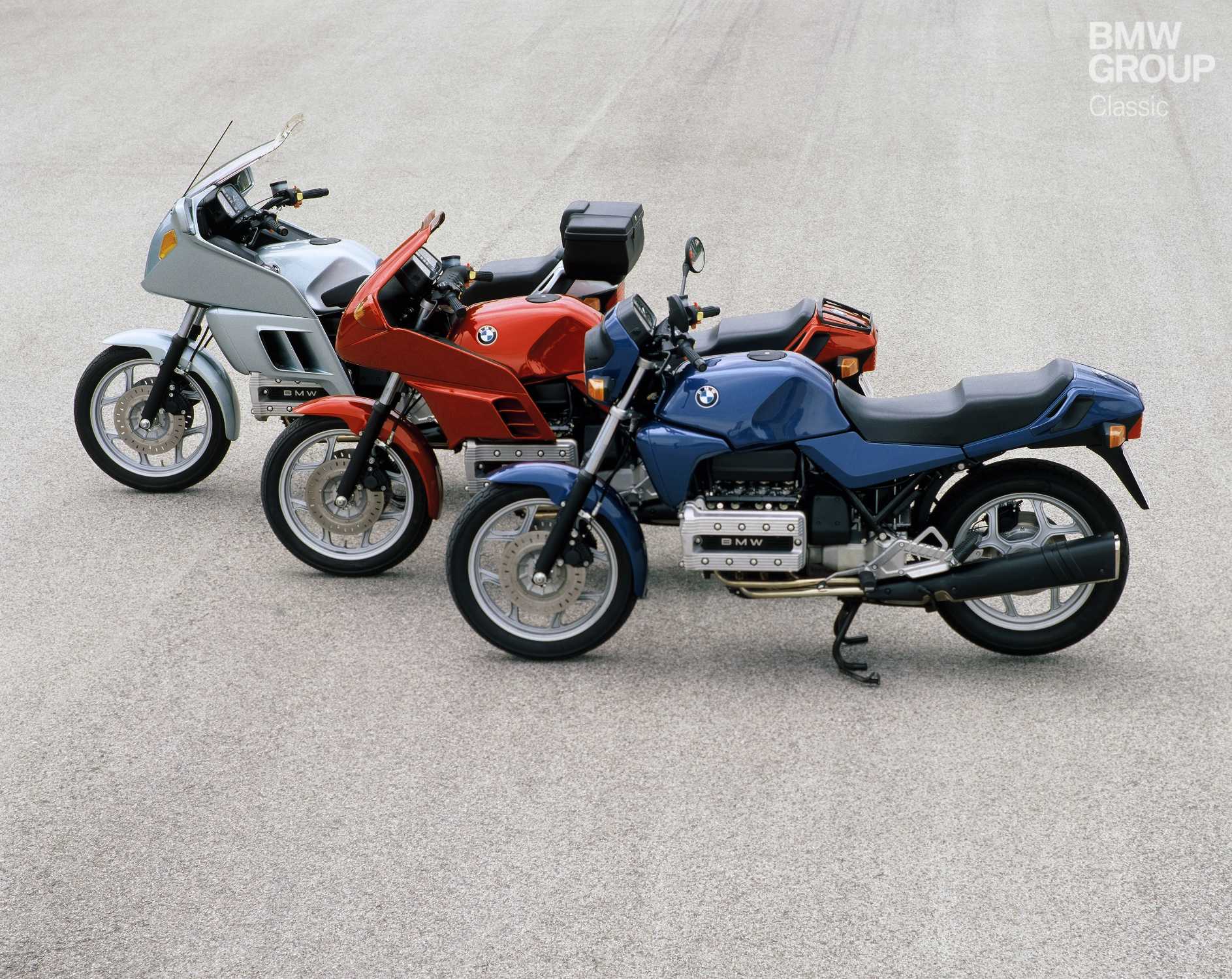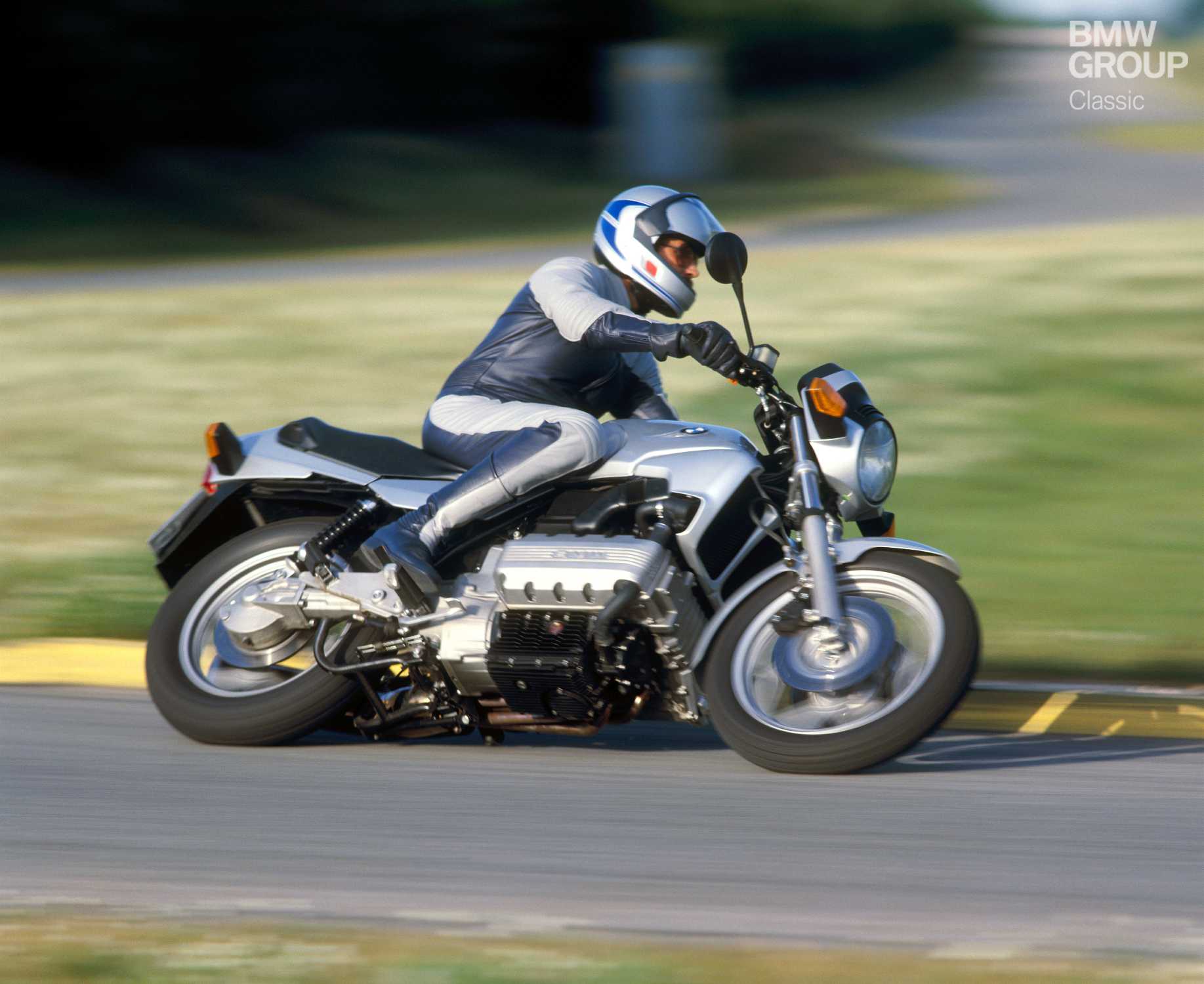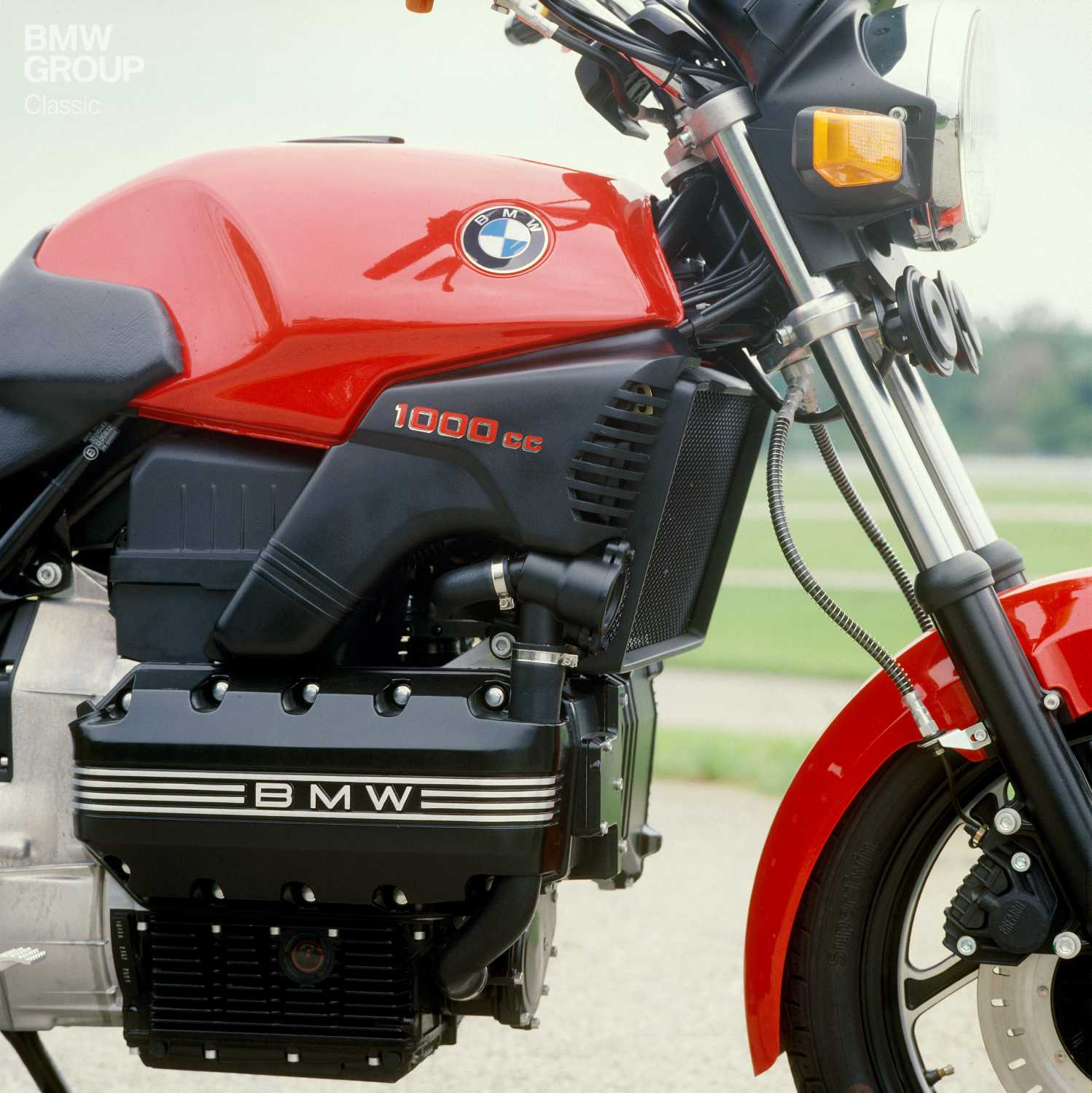In 1983, the boxer engine was already celebrating 60 years of service in BMW motorcycles; BMW and the boxer had formed an inseparable double act. But then BMW unveiled a new bike at the Paris Motorcycle Show that looked nothing like the brand’s usual models we knew and loved. The new four-cylinder in-line unit broke with traditions that had seemed set in stone. So it caused much more of a stir than the average new model. Some called it progress, but others were worried the brand was betraying its heritage.
The dust soon settled once testers and enthusiasts got to sample the K 100 for themselves on lengthy test rides, their view of the newcomer staging an abrupt about-turn. The K 100 was fantastic to ride, with power delivery and handling dovetailing to perfection. Fans could also rest assured that boxer engines would continue to be fitted in BMW bikes for a long time to come. The K 100 was not intended to supersede the boxer as some feared, rather it added a fresh angle to the BMW line-up. And in the process, it gave many a sworn boxer enthusiast food for thought.
Good things come to those who lean.
The water-cooled four-cylinder engine with dual overhead camshaft specially developed for the K 100 generated output of 90 hp from its 987cc. Four cylinders for a motorcycle was nothing unusual, but nobody was arranging them quite like BMW’s engineers (i.e. horizontally). Rotating the engine by 90° gave it a flat design, in turn lowering the bike’s centre of gravity and having a hugely positive effect on its riding characteristics. The electronic engine and ignition control system was another global first that brought top-class car technology to the motorcycle world. At the rear, a single-sided swing arm borrowed from the R 80 G/S ensured the engine’s power was transferred to the road with suitable aplomb, while the instrumentation, switches and levers were all developed from scratch. The K 100 had no fairing yet still clocked an impressive top speed of 215 km/h (134 mph), while the smart and sophisticated-looking RS version managed an extra 5 km/h (3 mph) courtesy of its sleeker aerodynamics.
Four of the best.
The original K 100 remained a talking point for a long time and stole the limelight from many of its rivals. The RS was crowned “Motorcycle of the Year” on four occasions and the bike became a true bestseller. 12,871 units of the first K 100 had been built by 1990, while the K 100 RS accounted for almost three times that figure. Whereas full-fairing motorcycles were seen as the way forward at the time, naked bikes with their wonderfully nostalgic feel have now firmly re-established themselves in the popular affection.
The K 100 neatly sums up the unwavering innovative flair possessed by BMW’s engineers. Yes they endeavoured to uphold and keep improving established traditions, but at the same time they were not afraid to venture into pastures new. And so the boxer engine is still around today at the grand old age of 95 – and that in itself is warmly reassuring.




